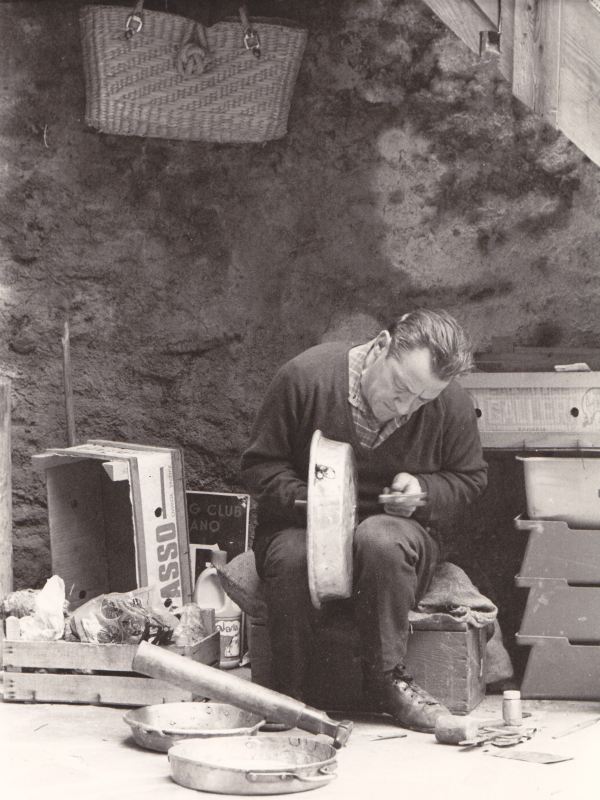 Magnàn at work.
Magnàn at work.
The tinsmith's craft did not require any particular skills: often it was the father or a family member, who taught the apprentice all the secrets of the job and took him with him in his journeys far from home.
The equipment used consisted of just a few tools: the bellows
(el bufét) or forge, a few bars of tin, a small anvil hoisted up on to a piece of wood
(l’incügen), scissors to cut the sheet of metal
(i fòrbes), a punch
(el bulzùn), a hammer, nails
(la ciudère), a pair of tongs, some thin sheets of copper, a container for the raw acid and one for the heated acid.
Everything was stored in a wooden box
(la bùlgia), also used as a work stool.
It had a leather belt and was carried around the neck as they travelled from one place to another.
When he reached the village, the tinsmith went round to announce his arrival with his typical cry of
l’è scià èl magnàn, often accompanied by banging a copper pot with a stick.
He always worked out in the open air, usually in a corner of the village square, as he had to use fire.
The tinsmith also used certain materials daily, such as tin, mixed in small amounts with lead.
Copper required a special skill and only some tinsmiths managed to acquire the techniques using galvanised sheet metal, raw or muriatic acid, heated acid, tow and wadding.
They also had the
bèrfe, a sealant they applied on the outside of broken or cracked pots used particularly to cook food.
It consisted of a mixture of egg white, powdered soapstone, lime and ash.